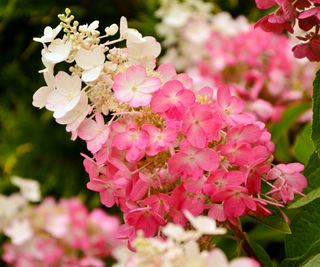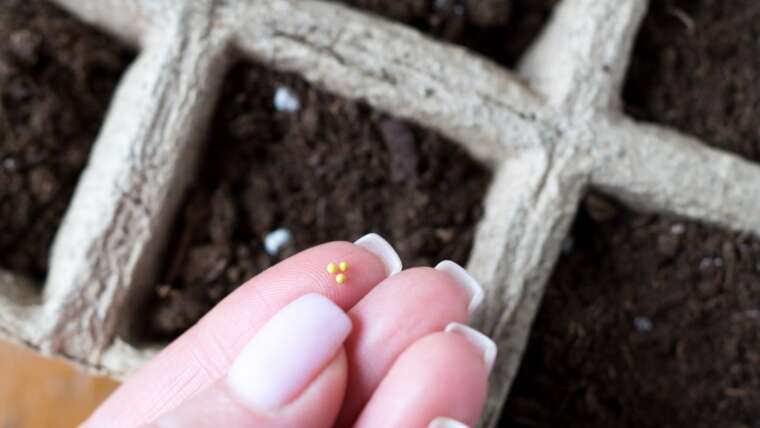Carrots and spinach are powerhouse vegetables. When planning to grow these two crops, you might wonder if it is possible or beneficial to grow spinach with carrots to save space and maximize yields.
The practice of growing two or more species together is called companion planting, and it is an age-old practice. Companion planting can benefit one or both plants if it is done correctly.
However, not all crops make good companions. Let’s explore whether spinach and carrots make good companions.
The Short Answer
Go ahead and pair spinach with carrots in your garden! This combo works well together. They have similar needs and won’t compete for resources. Both are low-growing, cool-weather crops. Spinach will mature faster, but its shallow roots won’t disturb or prevent carrots from developing under the ground.
The Long Answer
Before we look specifically at spinach and carrots, let’s discuss the practice of companion planting. What are the benefits and downfalls of this way of planting, and how do we determine whether two plants are compatible?
Companion Planting
Interplanting benefits each other through support, moisture retention, and soil enrichment.
There are pros and cons to companion planting, and it is not an exact science. However, there are some tried and true combinations that you can rely on working. Most famously, Indigenous people in the Americas used a combination called the “Three Sisters.”
These sisters consisted of corn, beans, and squash. This combination is beneficial for all three crops. The corn provides support for the beans to grow upon, the large leaves of the squash plants shade the ground, helping the soil to retain moisture, and the beans are nitrogen fixers; they enrich the soil for other plants.
Benefits of Companion Planting
Two plants with different growth habits or similar needs, which won’t compete with one another, can be planted close to each other to conserve space.
Some plants are reputed to improve the flavor of other vegetables and herbs simply by their presence. Tomatoes and basil make great companions for this reason. While it’s not scientifically proven, many people swear basil makes their tomatoes taste better.
Certain herbs and other plants offer some protection for their companions as their roots release natural chemicals or their scent repels pests that can decimate your vegetable crops. Marigolds are one of these, as well as garlic and several different herbs.
I mentioned that beans are nitrogen fixers, which means they draw nitrogen out of the air and affix it to nodules on their root system. Later, as their roots decompose, they provide valuable nutrients to other plants nearby. Many vegetables are heavy feeders, so planting them after cycling through nitrogen fixers will save you some fertilizer.
In the same way that corn can be used to support climbing plants, squash leaves help shade the roots of other plants. Some plants can provide environmental benefits to others. Some plants may act as a shelter or windscreen for others.
Some plants are very talented pollinator attractors. These flowers can draw pollinators to your vegetable garden, and while they are there, they are more likely to pollinate the other crops in the vicinity, leading to greater production.
Drawbacks to Companion Planting
While some pairings are beneficial, encouraging the general health and well-being of one another, some pairings aren’t so great. It is important to understand the habits and needs of all species in a pairing because these are the things that will determine what kind of companions they are. Some drawbacks of companion planting include:
- Reduced Yield – Some plants compete too much for nutrients, making one or both plants produce a reduced yield. It is important to know that some plants, like brassicas and nightshades, are heavy feeders, so they don’t make good neighbors.
- Increased Incidence of Pests – As some plants repel insects, others draw them from all directions. It’s best to keep plants that have similar pests away from one another. Once there, the pests will be difficult to control and can destroy both crops.
- Incompatible Growth Habits and Needs – Not all plants grow well together. Their roots, the amount of water and nutrients they need, and the space they need can all be factors that decrease the compatibility of a pairing.
With these things in mind, let’s discuss how these two veggies grow separately and if they can get along as neighbors.
Planting Spinach
 Spinach is a nutrient-rich, easy-to-care-for crop that prefers direct sowing with ½” depth.
Spinach is a nutrient-rich, easy-to-care-for crop that prefers direct sowing with ½” depth.
With a rich nutrient profile and relative ease of care, spinach is garden gold. It is a cool-weather crop that performs best when planted in spring or fall, giving it time to mature without the scorching heat of the midsummer sun. It matures quickly, taking only 20-30 days until baby greens can be harvested and about twice that long for mature leaves to grow.
Spinach likes to be directly sown, as its roots don’t take well to the disturbance of transplanting. You can plant spinach seeds early in the spring without worrying about a late freeze. Sow spinach seeds in rows at least 6” apart, planting them ½” deep and 1” apart.
Spinach is a heavy feeder. An organic granular fertilizer, rich in nitrogen for leafy green development, should be worked into the soil before planting and applied every 2 weeks afterward. They need at least 1” of water per week and more as the weather heats up.
Spinach plants develop a long tap root and an intricate system of shallow roots. Spinach is better off being watered less deeply but more frequently.
This green is susceptible to many garden pests, so it isn’t a great companion to other insect attractors. Leaf miners can be a particular issue.
Planting Carrots
 These nutritious roots thrive when directly sown in the garden.
These nutritious roots thrive when directly sown in the garden.
Carrots can be a bit picky about their environment, but once you’ve mastered growing this healthy vegetable, you will never return to store-bought carrots. Carrots pack a nutrient punch with high levels of beta-carotene.
Similarly to spinach, carrots prefer to be directly sown. Their roots don’t like to be disturbed, so transplanting is not a great method. Carrots are also cool-weather vegetables best planted in early spring before the ground warms up.
Carrots are not picky about space. They are happy as long as they are not planted where they will get tangled up in other roots. They can be harvested when finger-sized or left through the summer to grow larger. Carrot roots tend not to interfere with other plants if they have an inch or two of real estate.
Directly sow carrot seeds ½” deep and 1-2 inches apart. Rows can be 2”-3” apart or interspersed with other crops. They like to be fertilized every 3-4 weeks but hold back on nitrogen-heavy fertilizers to avoid excessive green growth above the ground, with little root growth.
Because most of the plant resides underground, carrots typically attract different pests from other vegetables. Root maggots can be an issue. Rodents also like snacking on these veggies.
Carrots will need 1”-2” of water per week, increasing during hotter weather.
Final Thoughts
With similar planting times, fertilizing, and watering needs, pairing spinach with carrots is a great idea. Their root structures don’t interfere with one another, and carrots will be perfectly happy sharing space with these leafy neighbors.
They both prefer to be directly sown, and because one is a root veggie and the other a leafy green, they have few pests in common. It’s a yes from us! Carrots and spinach make great companions, happy planting!




